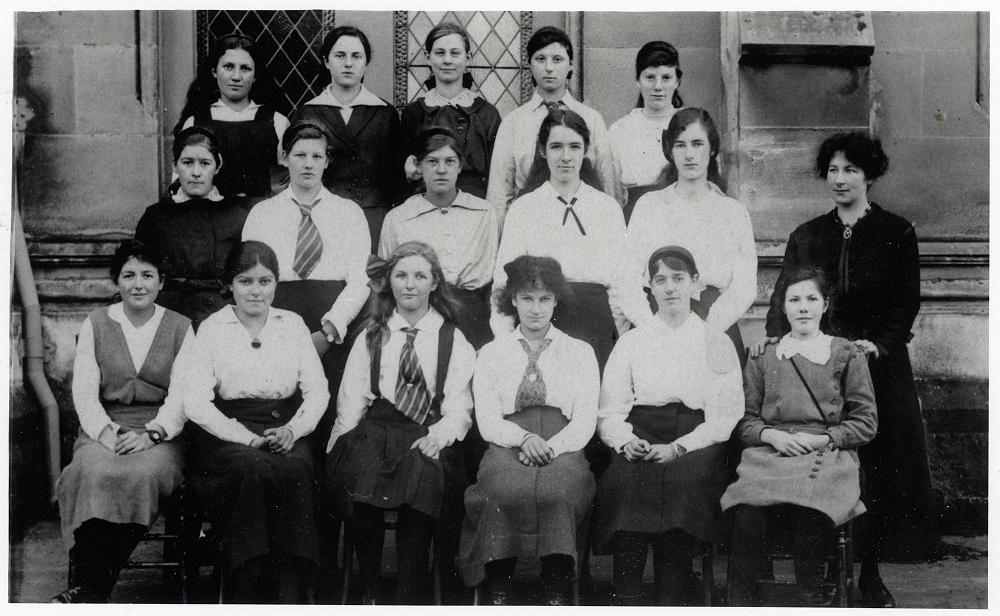
Presbyterian Education in Aotearoa
In the April edition of Touchstone, Jennifer Jeffery, from the Presbyterian Research Centre (Archives) presented a brief history of Presbyterian boys’ colleges. In this second part of the two-part series, she looks at the history of Presbyterian Church girls’ schools in our country.
RANGI RURU, CHRISTCHURCHThe origins of Rangi Ruru stem back to the Gibson family who founded a school at Arawa House in Christchurch. When Arawa House moved locations to Webb Street in the 1880s, the College was renamed Rangi Ruru. During the spring of 1923, the College relocated once more, this time to Hewitts Road where it remains today. In 1951 Malcom William Wilson became acting Chaplain for Rangi Ruru. He was originally the minister of Knox Church in Christchurch and was later Moderator of the General Assembly from 1962 to 1963.
COLUMBA COLLEGE, DUNEDINColumba College, Dunedin, was the second of eight schools to be established by the Presbyterian Church of New Zealand between 1914 and 1919. The man behind the foundation of Columba College was the Reverend Alexander Whyte who travelled Otago and Southland in the hope of gaining monetary support for this venture. In 1913 Whyte submitted his report to the committee who were appointed to encourage the establishment of Presbyterian Schools in Dunedin. The students at Columba were to be equipped with knowledge and skills and with a greater understanding of their own worth.
SOLWAY COLLEGE, WAIRARAPASolway, Wairarapa, was created when Marion Beatrice Thompson was propositioned in 1915 with the task of becoming principal of a girls’ boarding school in the Wairarapa. Thompson accepted, after much deliberation, and work began on renovating the nine-roomed colonial homestead, ‘Solway’, which was surrounded by 18 acres of trees. In 1916 Solway opened, with the directive to incorporate spiritual teaching into the academic curriculum – where religious instruction permeated into school life, enriching the character.
IONA COLLEGE, HASTINGSIona College, Hastings, was officially opened on 24 February 1914 by the New Zealand Prime Minister, the Right Honourable William Massey, due to the Presbyterian Church’s commitment to education. In 1911, General Assembly agreed to a proposal from Hugh Campbell who offered eight acres of land in Havelock North. The Assembly also accepted the offer of Mary Isabel Fraser who agreed to work for five years with no salary as principal.
QUEEN MARGARET COLLEGE, WELLINGTONThe move of Scots College from Hobson Street, Wellington, in 1919 offered an opportunity to use this space to facilitate education for girls and it became Queen Margaret College. The school buildings had to be renovated to appeal to females but the school grounds were considered appropriate. N Jobson was appointed principal, with the aim to provide for girls a sound and moral education built on a strong Christian character.
ST. ANDREW’S COLLEGIATE, DUNEDINSt. Andrew’s Collegiate, Dunedin, was established when Margaret Smyth, a recent graduate from an Arts course at the University of Otago, was searching for a teaching position at a secondary school in Dunedin. When discussing her misfortunes with Rev Dr Rutherford Waddell in 1902, Waddell suggested she establish her own school. In February 1903, four pupils began their educational pursuits. By 1905, the roll blossomed to 33 students, which made the Trade Hall they had been using unfit for service. The First Church classrooms were requested, and the school remained there for 13 years.
ST. ORAN’S, LOWER HUTTSt. Oran’s, Lower Hutt, originally founded in 1958, was seen as a solution to the escalating roll at Queen Margaret College. Practically bursting at the seams, with long waiting lists and being the only girls’ Presbyterian school in Wellington, it was decided that a new college would help reduce the growing pressure on Queen Margaret College. A suitable location was found and the proposed school, legally known as Hutt Valley Presbyterian College for Girls Incorporated, was established. Five years later, the Board of Governors was established to discuss uniforms, mottos and the official school name. In February 1959, Wellington Presbytery officially approved St. Oran’s School.
ST. CUTHBERT’S COLLEGE, AUCKLANDSt. Cuthbert’s College, Auckland, originally opened 1 February 1915 under the name Auckland Presbyterian Ladies’ College, and was located on Stokes Road, Mount Eden, Auckland. Shortly after opening, it became St. Cuthbert’s College, with the motto ‘By Love Serve’. By the time the roll reached 190 students - including 38 boarders - the College had to relocate. In 1925 a location at Epsom was found and that is where the school remains today.CaptionsThird form students at St. Andrew’s Collegiate School, Dunedin, with their teacher, thought to be Margaret Smyth, possibly taken in 1917. A group of girls plays outside Queen Margaret College, Wellington. The photograph is undated, but looks to be circa 1950.Images courtesy of the Presbyterian Research Centre Archives.
Gallery

